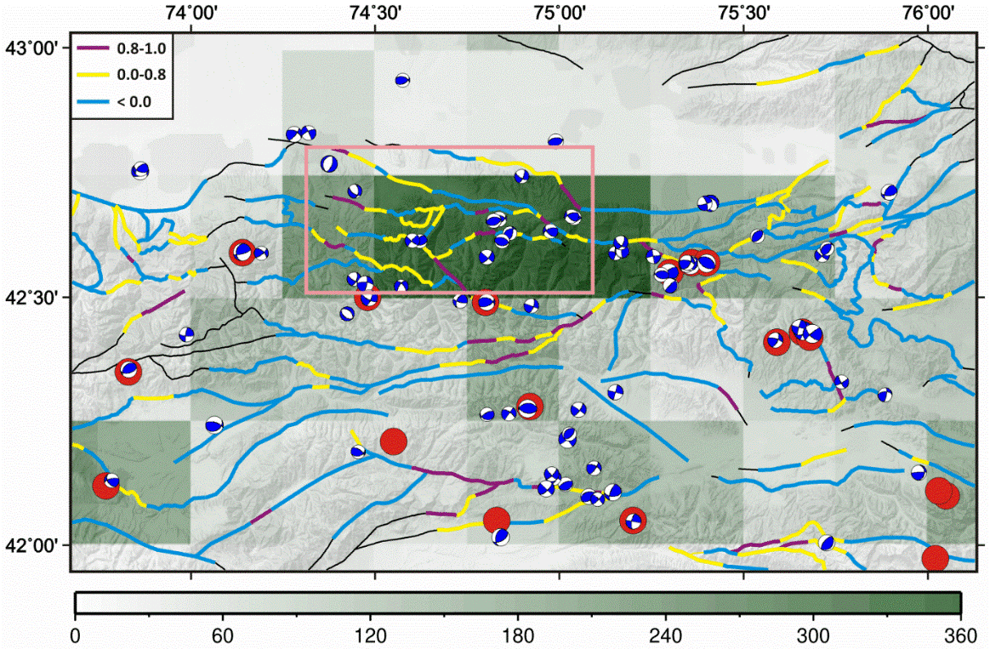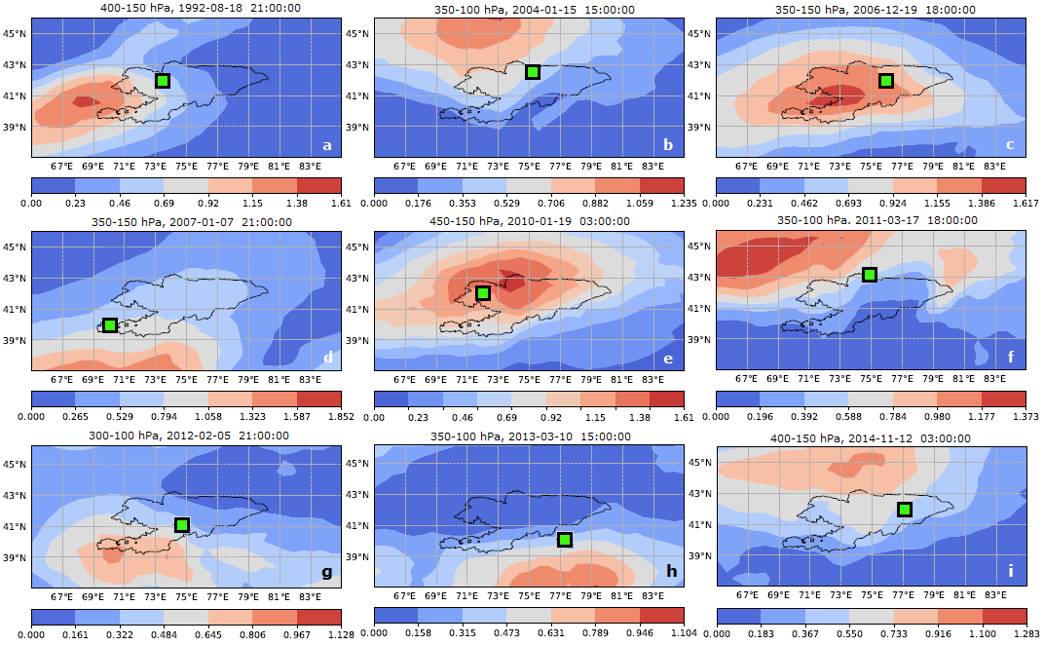According to the complex of geological and seismological data on the northern slope of the Kyrgyz ridge (Tien Shan, the Sokuluk-Kegety interfluve), the area with increased values of signs of seismic hazard was identified.
In this area, each cell in longitude and latitude 0.25°×0.25° contains up to 360 earthquakes K>6 according to the KNET network data for 1994-2019. This number of earthquakes here is 2-10 times more than seismic events in the cells around. Also in this area there is a high density of faults with increased values of normalized Coulomb stresses and a high probability of their reactivation. According to geological and geodetic data and solutions of focal mechanisms, these faults have thrust and strike-slip kinematics, which indicates the concentration of matter. There are no earthquakes here with a significant level of stress relief as in the area around, which also indicates an increased level of seismic hazard for the selected area.

Figure. Zoning of faults by the magnitude of normalized Coulomb stresses [Rebetsky and Kuzikov, 2016] against the background of the distribution of the number of earthquakes (1994–2019) over the cells ≈20×28 km sq. (0.25°×0.25°). The focal mechanisms of earthquakes with K≥10 are marked in blue. Earthquakes with stress dropped Δσ≥10 MPa are shown as red circles. The pink rectangle is a seismically hazardous area (≈64×30 km sq.).
The result was obtained within the framework of the State task for RS RAS on the topic "Study of modern movements of the earth's crust in Central Asia with using the means of space geodesy" .
Authors: Sycheva N.A., Kuzikov S.I.
Publication: Sycheva N.A., Bogomolov L.M., Kuzikov S.I. Computational technologies in seismological research (on the example of KNET, Northern Tian Shan). – Yuzhno-Sakhalinsk: IMGG FEB RAS, 2020. – 358 p.
LIS laboratory result
Analysis of spatial-temporal distribution of atmospheric temperature over the territory of Kyrgyzstan, obtained from satellite data and seismic activity for the period of 1992-2015, showed the presence of short-period anomalies in tropopause region, preceding seismic events with M≥5.
Identification of preseismic temperature anomalies is based on the assumption that variations in atmospheric temperature caused by seismic activity at various isobaric levels in the upper troposphere and lower stratosphere differ significantly from the background fluctuations observed in the absence of strong earthquakes. To study temperature variability in pre-, co- and postseismic periods, 12 earthquakes of magnitude M≥5 were selected, which occurred in the territory and near the borders of Kyrgyzstan in 1992-2015. It was found that the formation of antiphase anomalous temperature perturbations in the tropopause region is clearly synchronized with seismic activity both in space and time. The anomalies had a horizontal size of several hundred kilometers and appeared ~3 days before the main seismic event.

Figure. Spatial distribution of DCORR parameter during preparation period for earthquakes with M≥ 5.0
The result was obtained within the framework of the State Task of the RS RAS – theme No "Study of geodynamic, seismic and geophysical processes as the basis for earthquake prediction (including modeling of inelastic processes in seismogenic zones)"
Authors: Sverdlik L.G., Imashev S.A.
Publication: Sverdlik L., Imashev S. Spatial-temporal distribution of atmospheric temperature anomalies connected with seismic activity in Tien-Shan // MAUSAM. 2020. 71. 3. P. 481-490.






